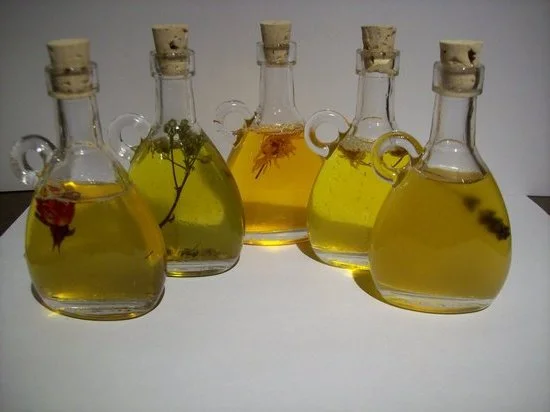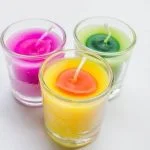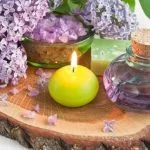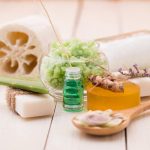Essential oils have gained popularity in recent years for their various health and wellness benefits, particularly in the practice of aromatherapy. However, with the rise in demand for these oils, it has become increasingly important to be able to distinguish quality essential oil from aromatherapy oil. Knowing how to differentiate between the two can greatly impact the effectiveness and safety of using essential oils for therapeutic purposes.
In this article, we will explore the basics of essential oils and their uses in aromatherapy, as well as key factors to consider when assessing the quality of essential oils. We will also address common misconceptions and provide tips for spotting genuine and high-quality aromatherapy oils. Additionally, we will discuss different testing methods and the significance of sourcing when it comes to ensuring the purity and quality of essential oils.
As consumers continue to seek natural remedies and alternative therapies, having a thorough understanding of how to distinguish quality essential oil from aromatherapy oil is crucial for making informed decisions about which products to use. By gaining insight into these distinctions, individuals can confidently select authentic and beneficial essential oils for their aromatherapy practices.
The Basics of Essential Oil
Essential oils are highly concentrated plant extracts that have been used for their therapeutic and medicinal properties for centuries. They are often used in aromatherapy, which is the practice of using natural plant extracts to promote physical and emotional well-being. Essential oils can be derived from a variety of plant sources, including flowers, herbs, roots, and trees, and each type of oil has its own unique scent and potential benefits.
When it comes to distinguishing quality essential oil from aromatherapy oil, it’s important to understand the basics of essential oils and how they are produced. Quality essential oils are typically extracted through methods such as steam distillation or cold pressing, which help preserve the integrity of the plant compounds. On the other hand, aromatherapy oils may contain synthetic ingredients or fillers, so it’s crucial to carefully examine the labeling and sourcing of these products.
To ensure that you are using high-quality essential oils for aromatherapy purposes, look for oils that are labeled as “100% pure” or “therapeutic grade.” Additionally, consider purchasing oils from reputable brands or suppliers that provide transparency about their sourcing and production processes. It’s also helpful to educate yourself about the specific qualities and characteristics of different essential oils in order to make informed choices about which ones will best suit your needs for aromatherapy.
Overall, understanding the basics of essential oils and their uses in aromatherapy is essential for making informed decisions about which products to purchase. By learning about their production methods, labeling practices, and potential benefits, individuals can better distinguish quality essential oil from aromatherapy oil and reap the full therapeutic benefits of these natural plant extracts.
| Key Factors | Consideration |
|---|---|
| Purity | Look for oils labeled as “100% pure” or “therapeutic grade” |
| Production Methods | Choose oils extracted through steam distillation or cold pressing |
| Sourcing | Purchase from reputable brands with transparent sourcing information |
What to Look for in a Quality Essential Oil
When it comes to choosing a quality essential oil for aromatherapy, there are several key factors to consider in order to ensure that you are getting a product that is pure, potent, and effective. Understanding these factors will help you distinguish between high-quality essential oils and lower-grade alternatives.
Source and Extraction Method
One of the most important factors to consider when assessing the quality of an essential oil is its source and extraction method. High-quality essential oils are often sourced from plants that are grown and harvested in their natural environment, without the use of pesticides or other harmful chemicals.
Additionally, the extraction method used to obtain the oil can impact its overall quality. Look for essential oils that have been extracted using methods such as steam distillation or cold-pressing, as these techniques preserve the natural properties of the plant.
Purity and Potency
The purity and potency of an essential oil are also crucial indicators of its quality. Pure essential oils should not contain any synthetic additives, fillers, or contaminants. To determine purity, look for oils that have been tested by third-party organizations and display a certification of quality on their packaging.
Additionally, a high-quality essential oil will be potent, meaning that it contains a high concentration of the plant’s natural compounds. This can be assessed by looking at the oil’s color, viscosity, and aroma.
Transparency and Reputation
When selecting a quality essential oil for aromatherapy use, it is important to choose a reputable supplier or brand that is transparent about their sourcing and production methods. Look for companies that provide detailed information about their cultivation practices, extraction processes, and testing procedures.
Additionally, reading customer reviews and seeking recommendations from trusted sources can help you make an informed decision when choosing an essential oil for aromatherapy use. By considering these key factors when assessing the quality of essential oils, you can ensure that you are using a product that is safe, effective, and truly beneficial for your well-being.
Common Misconceptions
There are many misconceptions and misunderstandings surrounding essential oils and aromatherapy. It is important to address these myths in order to accurately distinguish quality essential oils from aromatherapy oils. By understanding the truth behind these misconceptions, consumers can make informed decisions when selecting essential oils for their aromatherapy needs.
Myth: All Essential Oils Are the Same
One common misconception is that all essential oils are of equal quality and purity. In reality, the quality of essential oils can vary significantly depending on factors such as sourcing, production methods, and testing processes.
It is important for consumers to be aware that not all essential oils are created equal, and some products may contain synthetic substances or impurities. Understanding how to distinguish authentic, high-quality essential oils from lower-quality alternatives is crucial for achieving the desired therapeutic benefits in aromatherapy.
Myth: Aromatherapy Oils Are Interchangeable With Essential Oils
Another prevalent misunderstanding is that aromatherapy oils and essential oils are one and the same. While both types of oils are commonly used in aromatherapy practices, there are distinct differences between them.
Essential oils are natural, concentrated extracts derived from plants, flowers, or fruits, whereas aromatherapy oils may be diluted or formulated with synthetic ingredients. It is important for consumers to recognize the difference between authentic essential oils and blended aromatherapy oils in order to ensure they are using genuine, high-quality products for their therapeutic purposes.
Myth: Essential Oils Can Cure All Ailments
A common myth surrounding essential oils is that they possess miraculous healing properties and can cure any ailment or medical condition. While essential oils have been used for centuries for their potential therapeutic benefits, it is important to approach their use with realistic expectations.
Essential oils should be viewed as complementary tools for promoting wellness and relaxation, rather than as a sole solution for serious health concerns. Understanding the limitations of essential oil usage can help prevent unrealistic expectations and promote safe and responsible practices in aromatherapy.
By debunking these myths and misunderstandings about essential oils and aromatherapy, consumers can gain a clearer understanding of how to distinguish quality essential oil from aromatherapy oil. It is crucial to educate oneself on the nuances of different types of oils in order to make informed choices when selecting products for personal use in aromatherapy practices.
Identifying Authentic Aromatherapy Oils
When it comes to choosing the right essential oil for aromatherapy, it’s crucial to be able to identify authentic and high-quality products. With the popularity of aromatherapy on the rise, the market is saturated with various oils, making it challenging to distinguish between genuine and low-quality options. So, how can you distinguish quality essential oil from aromatherapy oil?
One of the first things to consider when evaluating the quality of an essential oil is its purity. Pure essential oils are derived directly from plants and do not contain any synthetic additives or diluting agents. Look for oils that are labeled as “100% pure” or “therapeutic grade,” as these are more likely to be of high quality.
In addition to purity, the botanical name of the plant from which the oil is extracted can provide valuable information about its quality. Reputable essential oil brands will clearly label the specific botanical name on their products, allowing consumers to verify their authenticity. For example, if you are purchasing lavender essential oil, look for the Latin name Lavandula angustifolia on the label.
Another important consideration in identifying authentic aromatherapy oils is transparency and testing. Trustworthy essential oil companies will often provide detailed information about their sourcing and testing methods. Look for brands that offer third-party testing results and openly share information about their production processes. This level of transparency can give you confidence in the quality and purity of the oils you are purchasing.
Overall, by paying attention to factors such as purity, botanical names, transparency, and testing methods, you can make informed decisions when choosing authentic and high-quality aromatherapy oils for your personal use.
| Factors | Description |
|---|---|
| Purity | Look for labels like “100% pure” or “therapeutic grade” |
| Botanical Names | Check for specific Latin names on labels (e.g. Lavandula angustifolia for lavender) |
| Transparency and Testing | Choose brands that provide detailed sourcing and testing information |
Testing Methods
When it comes to choosing essential oils for aromatherapy, testing their purity and quality is essential. With so many options available in the market, it can be challenging to identify authentic and high-quality essential oils. Therefore, knowing the different testing methods can help consumers make informed decisions and ensure that they are purchasing genuine products. Here are some common ways to test the purity and quality of essential oils:
- Gas Chromatography-Mass Spectrometry (GC-MS): This is considered one of the most accurate methods for analyzing the chemical composition of essential oils. GC-MS separates the components of an oil and identifies their presence and quantity.
- Organoleptic testing: This method involves using the senses to assess the quality of essential oils. It includes examining the color, clarity, aroma, and viscosity of the oil.
- Solubility testing: Essential oils should mix well with certain solvents like alcohol or carrier oils. Conducting solubility tests can help determine if an oil has been adulterated or diluted.
By understanding these testing methods, consumers can learn how to distinguish quality essential oil from aromatherapy oil. This knowledge empowers them to be discerning when making purchases and ensures that they are getting authentic and effective products for their aromatherapy needs.
Moreover, it’s important to note that reputable essential oil companies often provide detailed information about their testing methods and results. This transparency allows consumers to make educated choices about which products to buy. Looking for this information on product labels or company websites can be a good indicator of a brand’s commitment to quality and authenticity.
The Importance of Sourcing
When it comes to choosing quality essential oils for aromatherapy, the origin and production process play a crucial role in determining their overall quality. Understanding how these factors can impact the purity and effectiveness of essential oils is essential for anyone looking to incorporate aromatherapy into their wellness routine.
One key aspect to consider when evaluating the sourcing of essential oils is the geographic origin of the plants from which the oils are extracted. Different regions around the world have varying climates, soil compositions, and environmental conditions that can influence the aromatic compounds present in plants.
For example, lavender grown in France may have a different chemical profile compared to lavender grown in other regions. Therefore, being aware of where an essential oil originates from can provide valuable insight into its overall quality and composition.
In addition to geographic origin, the production process used to extract essential oils from plant material is equally important. High-quality essential oil manufacturers utilize methods such as steam distillation or cold-press extraction, which help preserve the natural integrity of the aromatic compounds present in the plant material. On the other hand, lower-quality oils may be produced using chemical solvents or harsh extraction methods that can compromise their purity and therapeutic properties.
When seeking out quality essential oils for aromatherapy use, it’s important to prioritize sourcing information provided by reputable suppliers. Look for details about the geographical origin of the plants used, as well as information about the extraction methods employed during production. By taking these factors into consideration, consumers can make more informed decisions when selecting essential oils for their aromatherapy practices.
- Consider contacting suppliers directly to inquire about sourcing and production methods
- Look for certifications such as “organic” or “wildcrafted” which indicate a higher standard of sourcing and production
- Research reputable brands and companies known for transparent sourcing practices and high-quality products
Conclusion
In conclusion, the ability to distinguish quality essential oil from aromatherapy oil is crucial for ensuring that you are getting the most out of your aromatherapy experience. By understanding the key factors to look for in a quality essential oil and being able to spot genuine and high-quality aromatherapy oils, individuals can make informed decisions when purchasing these products.
It is important to remember that the purity and quality of essential oils can impact their effectiveness in aromatherapy, so taking the time to assess these factors is essential.
When looking for quality essential oils for aromatherapy use, it is important to consider factors such as sourcing, testing methods, and common misconceptions about essential oils. By educating yourself on these aspects, you can make more informed choices about the products you purchase and use. Additionally, understanding the basics of essential oils and their uses in aromatherapy can further enhance your ability to distinguish quality products from others on the market.
Ultimately, choosing high-quality essential oils for aromatherapy comes down to being an informed consumer. By paying attention to where the oil comes from, how it has been produced, and utilizing various testing methods to assess its purity, individuals can feel confident in their selections. With this knowledge in mind, individuals can enjoy all the therapeutic benefits that quality essential oils have to offer in their aromatherapy practices.
Frequently Asked Questions
What Determines the Quality of Essential Oil?
The quality of essential oils is determined by several factors, including the plant species, growing conditions, extraction methods, and storage. The purity of the oil and its chemical composition also play a significant role in determining its overall quality.
How Do You Test the Purity of Essential Oils?
Testing the purity of essential oils involves various methods, such as gas chromatography and mass spectrometry to analyze the chemical components. Other tests include organoleptic evaluation, which includes visual inspection and smell testing for consistency and quality.
Is There a Difference Between Essential Oils and Aromatherapy Oils?
Essential oils are pure extracts from plants, while aromatherapy oils are typically essential oils blended with other carrier oils or substances for aromatic or therapeutic purposes. Aromatherapy oils may also contain synthetic fragrances, unlike pure essential oils produced through distillation or cold pressing.

Are you looking for a natural way to improve your health and wellbeing?
If so, aromatherapy may be the answer for you.






